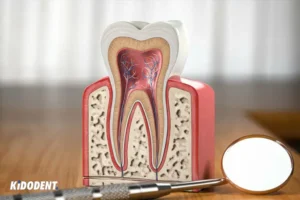When the major oral health problem is tooth decay, you can expect that dental filling to treat and restore decay becomes the common dental treatment. Dental filling treats teeth by filling the cavity with suitable filling materials.
Patients want their filling material to be safe in its biomaterial aspect. Biomaterial means the interaction between the filling material and the living structures in the human body.
To choose the materials for their fillings, people also want the best function and esthetics for their dental fillings. White or tooth-colored filling materials have gained popularity. On the other side, people also look for long-standing or durable dental materials that fit their dental cavities and resist the pressure of chewing or other pressures in the mouth.
Dental amalgam, the long standing dental filling material
For 150 years, dental amalgam has been used as filling material in the decayed tooth to serve patients the function they need during their daily life.
What is amalgam?
Amalgam is a dental filling material that is made from a mixture of mercury with other metals such as silver, copper, or tin. This mixture or the produced alloy from the variability of composition materials make up the amalgam.
What are the advantages and disadvantages of amalgam filling?
Most people prefer amalgam filling because of its durability and low cost. Today with white filling materials like composite resin and ceramic fillings, people still choose amalgam as their favorite option. It is clear that amalgam has proven to be a long-term restorative material. Amalgam can fill the cavities in stress-bearing areas in teeth and tolerate the mechanical forces in the mouth. Amalgam filling is easy to place and is done by dentists widely.
The main disadvantage of an amalgam filling is the lack of beauty or esthetics. These days, people go for white fillings to match the natural color of their teeth. Although dental amalgams don’t have the desirable look in the mouth, dentists can use amalgam fillings in the back teeth, where these fillings are hidden from sight. Due to environmental concerns and waste management in nature, there are some concerns over the use of mercury in dental restorations. Although the mercury element is toxic, this doesn’t mean it is harmful as filling in the mouth. Handling the amalgam to reduce the exposure to mercury for both patients and dental staff but is important.
Other types of dental filling
Dental filling materials are in two forms: direct filling and indirect filling. Direct filling materials are directly applied to the restorative area, but indirect filling materials are fabricated in the laboratory before application.
The growing market for tooth-colored or white filling materials has given rise to alternative filling materials other than amalgam fillings. The beauty of the restored teeth is amazing with these fillings. Newer changes in order to adapt to the wear resistance and corrosion resistance factors are improving for the white filling materials. These are common white filling materials :
- Composite resin
- Glass ionomer cements
- Resin-modified glass ionomer cement
- Compomers
And indirect dental filling materials are:
- Inlays and onlays: inlay and onlays are made in the laboratory. Processed resin, ceramic, and alloys like gold make up inlays and onlays’ structure. Inlays and onlays are restorations that fit minor to moderate caries. The difference between inlays and onlays is that onlays cover a wider area of the cusps of teeth or greater occlusal coverage than inlays. Also, onlays can treat larger cavities.
The durability of inlays and onlays compared with composite resin fillings, especially in the back teeth is better.
How long do dental fillings last?
The dental amalgam filling has the highest longevity among other fillings. On average, amalgam fillings can last 10 to 15 years. The other popular white dental filling, resin composites, can last between 5 to 8 years. Factors like polishing the materials in the finishing process, adhesive and bonding techniques, oral hygiene, and eating habits can all impact the longevity of dental fillings.
There are reasons why dental filling materials fail. The most common causes of failure in fillings are recurrent caries and fractures. Adhesive techniques and well-polished material in the finishing process can stop the ingression of bacteria into the restoration and also increase the wear-resistance and corrosion-resistance capabilities of fillings.
